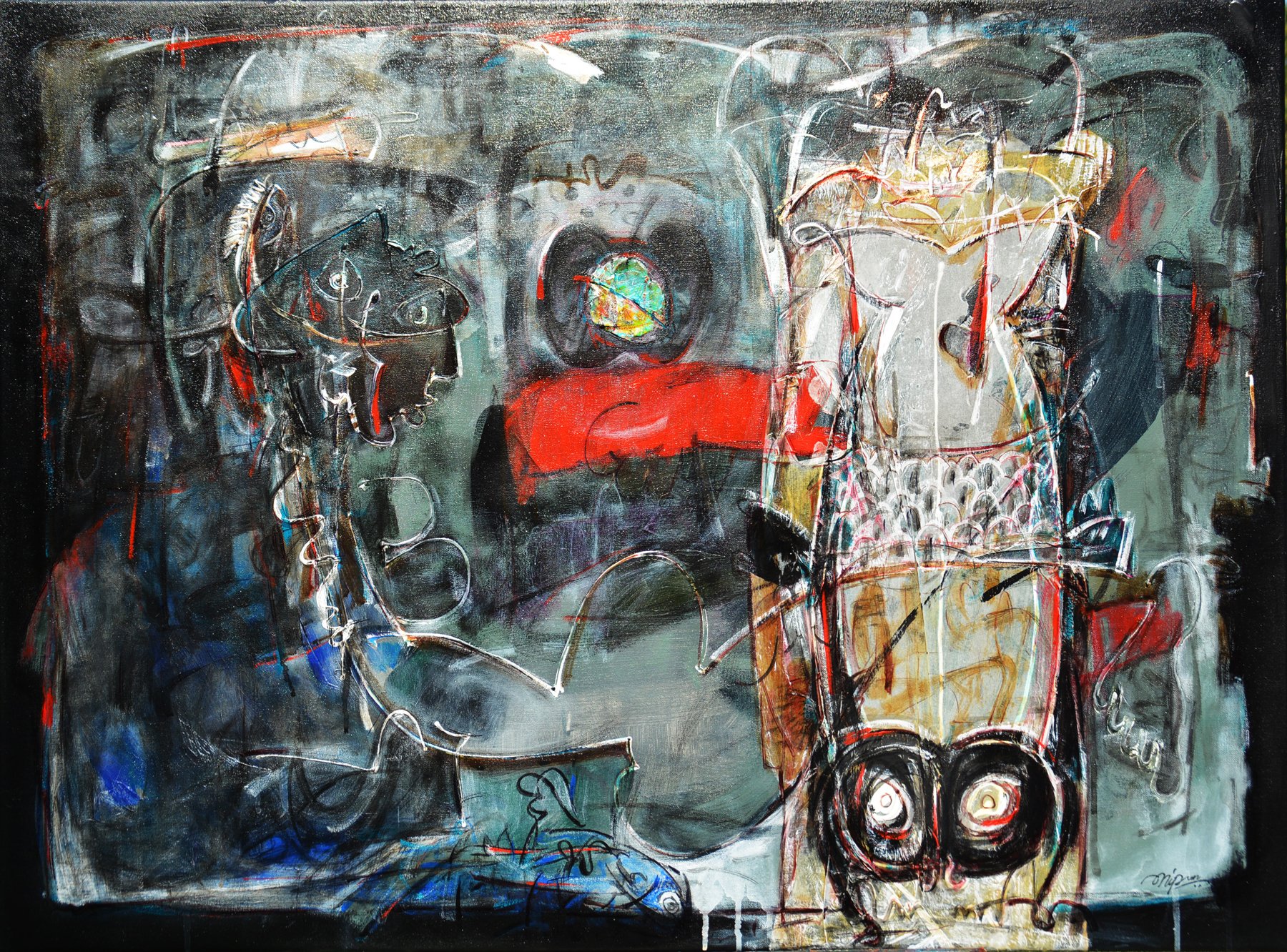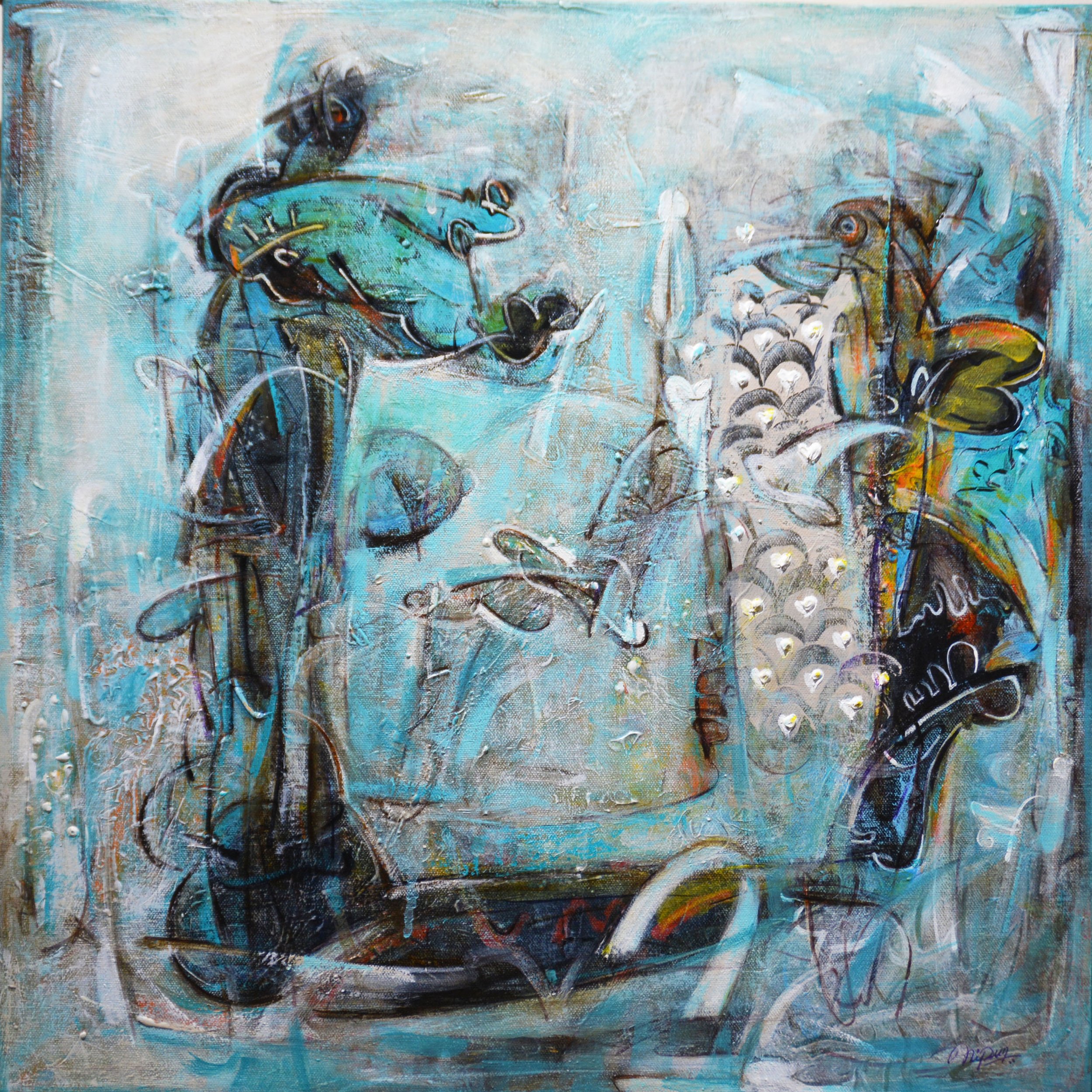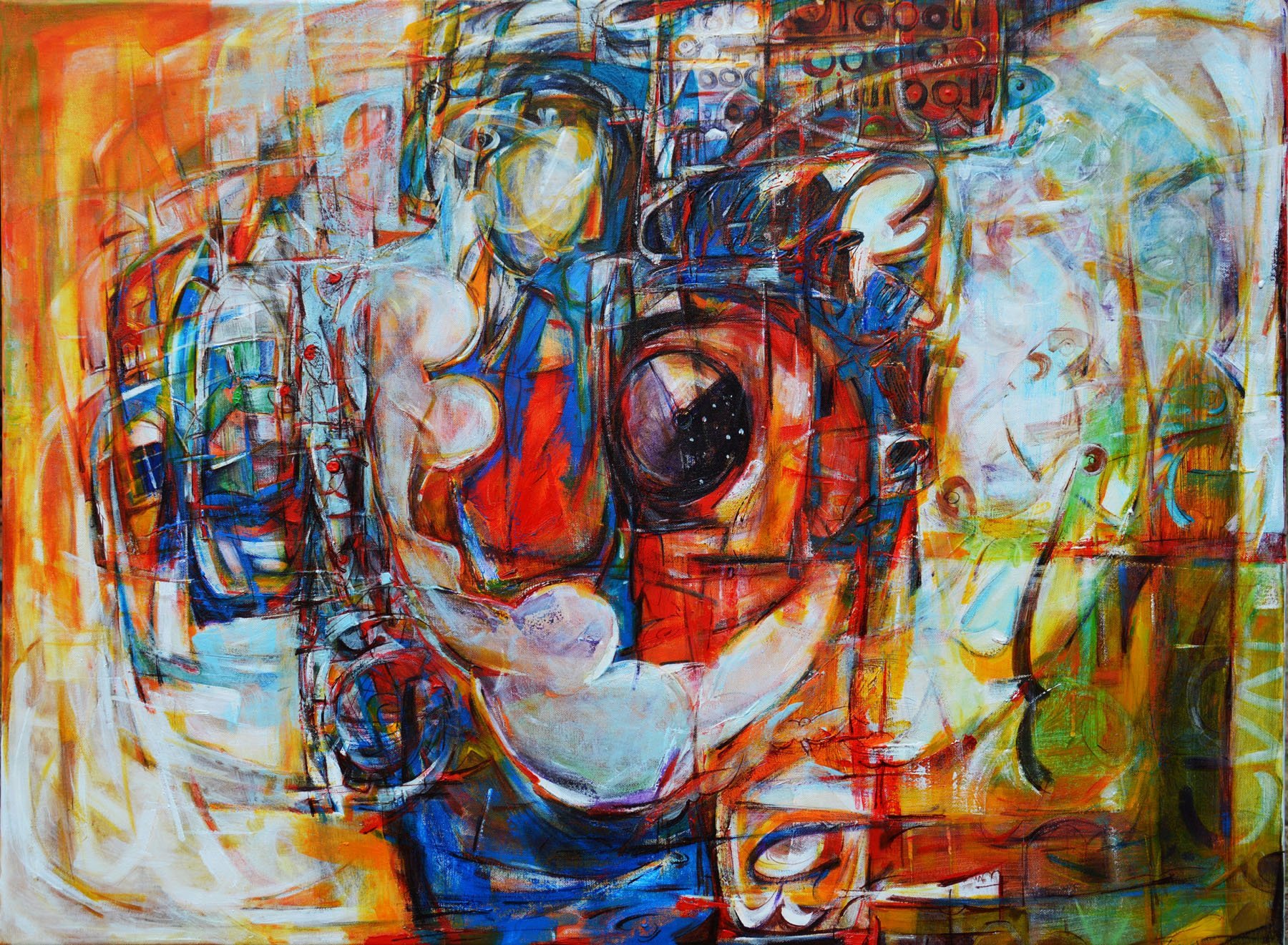Interview
Nipun Manda
Nipun is an Asian American U.S. citizen of Indian origin. He is a BFA and MFA graduate with a diverse artistic career, including being an educator.
Nipun has been practicing art for over 15 years. His works have been represented by various galleries and art fairs, and he has successfully held extensive solo and group exhibitions, both nationally and internationally. His paintings have filled the spaces of national and international collectors.
Art has always been an important part of Nipun’s life. His paintings convey his rich experience, incorporating globalization with its own multi-ethnic heritage.
Nipun currently resides and continues his studio practice in Maryland, USA.
What is your background and how did you start your journey in the art world?
“Since childhood, I’ve drawn landscapes, animals, and human figures. When I was in school, my favorite subjects were art and science. My favorite parts of science class was when we had to draw the human anatomy, dissections of plants, and their internal parts. Over time, I slowly developed my interest in art.”
What inspires you most?
“Nature and mankind are my greatest sources of inspiration. My perception of inner and outer space, juxtaposed with the time and space of everyday life creates visual, emotional, and psychological impressions of urban tension in my works. Although the images depict raw emotions and harsh realities, the scene is tempered with gentle optimism and beauty.”



What themes do you pursue? Is there an underlying message in your work?
“I always try to give a positive message and connect with the viewers through my work. My theme is based on everyday life experiences and psychological impressions of urban tensions and globalization.
Most of us are so caught up in our everyday lives that we don't have much time or energy to focus on how the world might become better. For many people, their reality of those choices are not usually acknowledged consciously, at least not on a daily basis. Such people live according to habit, and exist mostly within choices given to them. These are mainstream media and educational systems, economic necessity, and immediate need satisfaction.
But if we take time to reflect on it, we find that in each given moment, we do have the ability to choose how we want to perceive the world, and how we want to live in it. We all have fundamental choices to make about who we are in the world, what the world means to us, and what kind of world we want to help create.”
“Painting is a universal language that enhances the awareness, as well as the understanding of other cultures.”
How would you describe your work?
“The most satisfying way of working, for me, is the combination of the abstract and the figure. I combine the freedom of abstraction and the emotions that the figure can carry with the symbolic potential of the objective world, and the possibilities abstraction presents in suggesting the unknown.
My paintings operate somewhere between abstraction and the cognitive world; somewhere between the known and the unknown. My goal is to leave a cognitive space for viewers to fill in. I want my work to offer the chance to see things from different perspectives. With the dimensions of the pieces, viewers become conscious of their physical relationship to the objects, the scale proportion and humanity. This then elicits an emotional and intellectual response from the viewers.”
Which artists influence you most?
“Picasso and Willem de Kooning have had the greatest influence on my work.”
What is your creative process like?
“Art is a wondrous journey for me. I try to paint what I believe in, eliminating any marks or images which feel disingenuous. I listen to what the painting is telling me to do, rather than imposing my will on the work. In this way, the paintings aren’t driven self-consciously. They emerge from a more enigmatic and less familiar place. In the process of painting, initiation, manipulation and removal of marks become one of the actions and reactions. The paintings emerge slowly, one on top of the other, until they tell me I am done.
It’s hard to explain the how and the why. It’s easy to make a formal analysis of the work and to position it in the great and diverse continuum of contemporary painting.”
What is an artist’s role in society and how do you see that evolving?
“Being an artist involves wearing all sorts of masks, just like any other job. The difference is we have the lingering responsibility to unearth the truth of things. Sometimes we will seem vulnerable, and sometimes we will make mistakes. But the main thing is not to give up.
We live in a global village, so we are all connected via some form of social media. Artists are no longer hermits and we are all ‘out there in the world’. As an artist, I aim to inspire, connect, and collaborate.”
Have you had any noteworthy exhibitions you'd like to share?
“I have shown my works in various solo and group exhibitions and art fairs, including:
Earth Creativity & Sustainability in the Florence Biennale, Italy.
Queens Museum New York.
Affordable art fair Battersea, London.”





